 |
| |
MI6 looks back at Lee Goldberg's "Making
the James Bond Films" written during the 25th
anniversary year of James Bond's cinematic adventures...
|
|
Making The James Bond Films (Part 1) - By Lee
Goldberg
9th June 2005
Lee Goldberg interviewed those involved with bringing Bond to
the big-screen back in 1987, when the cinematic 007 series was
celebrating it's 25th anniversary and the introduction of the
fourth James Bond actor...
| The coveted License
to Kill has passed from Roger
Moore to Timothy Dalton
for this summer's 007 adventure "The
Living Daylights," but there's no doubt James Bond
will emerge victorious, unscathed by either the vicissitudes
of the box- office or the slings and arrows of critics.
It's been 25 years since the first 007 movie, and now,
after 15 films, three stars, and over $1 billion in revenues,
people will still line up around the block for more. It's
a success story "so far beyond the movie business dreams
of glory as to be mind-boggling," wrote author Richard
Condon.
James Bond has grown past the boundaries of mere popular
entertainment to become a cultural artifact -- not one relegated
to history, but one that's still going strong.
|
|
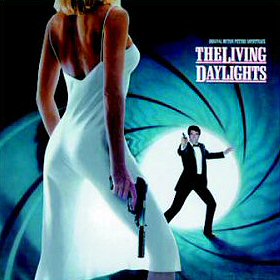
 MI6
Price $10.99
MI6
Price $10.99
 MI6
Price £7.99
MI6
Price £7.99
|
Even as "The Living Daylights"
is playing in theatres, New York's Museum of Modern Art will be
showcasing an exhibit of Bond paraphenalia. "The elimination
of James Bond, either by Her Majesty's enemies or by the disfavor
of the movie public is not to be thought of," wrote novelist
Anthony Burgess. "He goes on."
It wasn't always that way. In fact, just about no one remembers
the first time author Ian Fleming's James Bond appeared on screen.
That was back in 1954, and it's no wonder it has been forgotten.
Only a rare kinescope exists of the live television production,
an adaptation of Fleming's novel "Casino
Royale" for CBS' "Climax Theatre." The producers
called him "cardsense Jimmy Bond," made him a rough
American gambler instead of a British spy, and pitted him against
Peter Lorre.
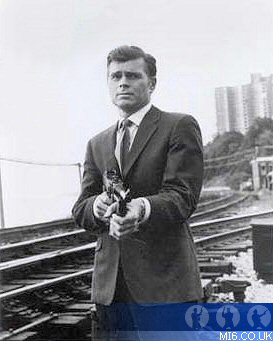
Above: Barry Nelson
|
|
It has never been broadcast since, so most
people have no idea that actor Barry Nelson, still a frequent
face on television these days, was actually the first James
Bond. "No one ever stops me on the street and recognizes
me as James Bond," jokes Nelson. "It's kind of
a novelty for me to be the first one. It certainly is a
curiosity, there being a James Bond film hardly anyone has
ever seen."
It wasn't until 1962 that producers Albert
R. Broccoli and Harry Saltzman, along with screenwriter
Richard Maibaum, took Fleming's literary hero and molded
him into movie hero with "Dr.
No."
The first thing they did was cast against type. Sean
Connery was a virtual unknown and "was nothing
like Fleming's concept of James Bond," says Maibaum.
"If we had chosen somebody like David Niven, that was
more like the way he wrote it."
|
"Sean was a rough, tough, Scottish soccer player, not a
suave, cultured gentleman of the Cambridge/Whitehall type,"
explains Maibaum. "The fact we attributed to him such a high
style epicure was part of the joke."
The big question was whether audiences would laugh with them
or at them. "When Sean, in the beginning of the picture,
said 'The Name is Bond, James Bond,' if you didn't believe it,
there would have been no series," says Maibaum. But audiences
did believe it and now "the line seems like the understatement
of all time."
Maibaum, who eventually worked as a writer on 11 more 007 films
including "The Living Daylights,"
believes that by casting Connery they inadvertently took a larger
than life role and made it someone the average person could relate
to. "It enabled the ordinary guy and girl to look at the
screen and say 'That's me. I could do all those things.' It was
a slight take off, not belabored or done consciously. But it came
off as if it was planned and it was a great, great plus."
| From Russia
With Love followed and, while that film is widely considered,
as Maibaum says, "the most successful artistically"
of the Bond films, the series really hit its stride with
the next adventure, "Goldfinger."
The movie set the style for the Bonds that would come --
the double entendres, the suggestive character names, the
bizarre henchmen, the stylish deaths, the amazing stunts,
the outlandish capers, the eccentric villain. And, above
all, the Aston-Martin.
The car was more than just another catchy gimmick; it was
a spectacular vehicle driving on the treacherous road dividing
comedy and drama. "We took into consideration the audience's
growing sophistication," says Maibaum. "We dared
to do something seldom done in action pictures. We mixed
what was funny with what was serious."
|
|
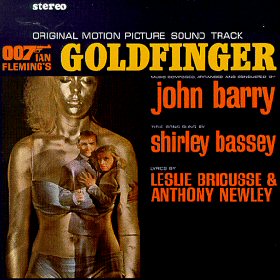
 MI6
Price $10.99
MI6
Price $10.99
 MI6
Price £6.99
MI6
Price £6.99
|
The formula continued to work through "Thunderball"
and "You Only Live Twice,"
by which time the audiences so identified Connery with the role
that the advertisements proclaimed in bold letters: "Sean
Connery is James Bond."
So when Connery decided to
quit, it's no wonder the producers thought the series was in dire
peril. If they believed their own hype, there could be no new
007. What they didn't see, and what they didn't discover until
much later, was that their advertising was true, but in a completely
different sense. George Lazenby,
an Australian male model, understood it intuitively before they
did and used it to his advantage.
| 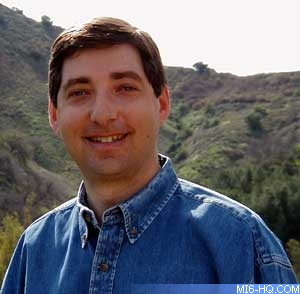
Above: Lee Goldberg
|
|
"I think the most acting I did was
to acquire the role in the first place," says Lazenby.
"I walked in looking like James Bond and acting as
if that's the way I was anyway. And they thought, 'all we
have to do is keep this guy the way he is and we've got
James Bond.'"
What they had was a man imitating Sean
Connery and, in "On
Her Majesty's Secret Service," he did it poorly.
But the producers finally realized what they unconsciously
knew already.
"When you cast James Bond, you're casting a leading
actor, not a character actor," says Michael G. Wilson,
Broccoli's stepson and co-writer and co-producer of "The
Living Daylights." "What that means is, the
actors to a certain extent are playing themselves."
|
And Lazenby was himself,
a man with no acting experience, a handsome model wearing someone
else's clothes -- Connery's
clothes. What the producers needed wasn't someone who would step
into Connery's shoes, but
someone who would reshape Bond in his own image. They couldn't
find that man in time for "Diamonds
are Forever." At the last minute, they stalled the inevitable
by luring Connery back one
more time -- in exchange for a $1 million donation to his favorite
charity and financing for two films of his choice.
It was a temporary solution. A new James Bond had to be found.
Paul Newman, Patrick McGoohan, Burt Reynolds, John Gavin, and
even Timothy Dalton were among
the dozens of actors considered before the producers settled on
Roger Moore.
Moore made his name in television
playing quick-witted, debonair adventurers like smooth-talking
gambler Beau Maverick, globe-trotting adventurer Simon "The
Saint" Templar, and notorious playboy Lord Brett Sinclair
in "The Persuaders." Somewhere along the line the roles,
and the actor who plays them, became one. He seemed perfect.
| When Moore
replaced Sean Connery
as James Bond, he didn't just continue the role as George
Lazenby did. Moore absorbed it. James Bond became yet
another extension of himself. Beginning with "Live
and Let Die," he imbued James Bond with the same
playful, coy charm that typified his TV characters, radically
transforming the style of the series and making 007 undeniably
his own.
"I'm not Sean Connery. In 'Live
and Let Die,' I didn't do any of that tough stuff because
that was what Sean would do. My personality is entirely
different than his," Moore says. "I'm not that
cold-blooded killer Sean can do so well, which is why I
play it for laughs. The producers encourage me to impersonate
myself." He believes the only difference between himself
and James Bond is that he doesn't carry around a Walther
PPK.
|
|
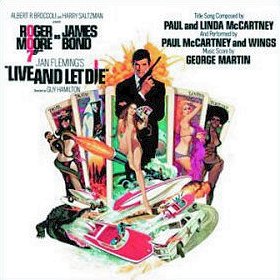  MI6
Price $10.99
MI6
Price $10.99 |
Related Articles
 Writing
`A View To A Kill` - By Lee Goldberg
Writing
`A View To A Kill` - By Lee Goldberg
 Lee
Goldberg's Interview With Roger Moore
Lee
Goldberg's Interview With Roger Moore
Watch for out for the final part of "Making
The James Bond Films" later this month.
Republished courtesy of Lee Goldberg, images
courtesy of Amazon associates.